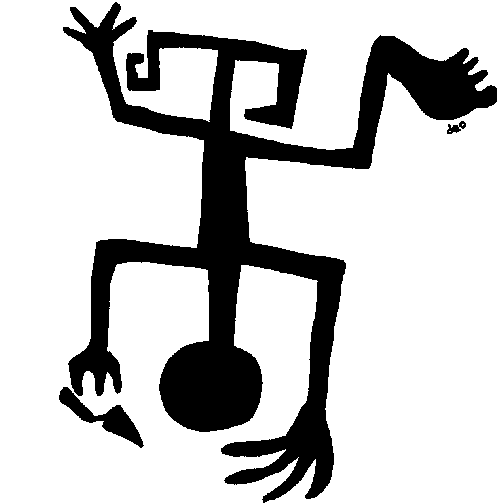
TFQA: Tools for Quantitative Archaeology
kintigh@tfqa.com +1 (505)
395-7979
TFQA Home
TFQA Documentation
TFQA Orders
Kintigh
(ASU Directory)
 |
TFQA: Tools for Quantitative Archaeology |
TFQA Home |
BRSAMPLE: Brainerd-Robinson Coefficient Differences Due to Sampling ErrorBRSAMPLE provides a Monte Carlo estimate of the sampling error of the Brainerd Robinson coefficient of a sample drawn from a known population or of two samples drawn from the same population. Input consists of the population proportions (or counts) and the sample size or sample sizes to be drawn. Output consists of a table of probabilities of getting the same or lower BR coefficient (as or less similar) between a sample of the specified size drawn from the population and the population itself or between two different samples drawn from the population. A histogram is also provided. The program was developed based on a suggestion from Warren DeBoer of Queens College and is described and used in DeBoer et al. (1996). Note: This program has been replaced by resampleBRED. It does everything that BRsample does, but adds calculations for Euclidean Distance Coefficients based on Percents. SAMPLE PROGRAM RUN File or Device for Output (CON for Screen) {CON} ?
Random Generator Seed (0 to set from clock) {0} ?
Read Population Data from [K]eyboard or a [F]ile {K} ?
Number of Types in the Population ? 4
Population Proportion (or % or Count) ? 12
Population Proportion (or % or Count) ? 31
Population Proportion (or % or Count) ? 64
Population Proportion (or % or Count) ? 133
Input Total = 240.00
[P]opulation-Sample or [S]ample-Sample Similarity {P} ?
Sample Size {100} ?
Number of Monte Carlo Trials {1000} ?
100%
Brainerd Robinson Population-Sample Similarity
Sample Size=100 Mean=188.09 Std= 5.31 Trials=1000
Rerun Using Same Population {Y} ?
Rerun Using Different Population {N} ?
SAMPLE PROGRAM OUTPUT Estimate Sampling Error in Brainerd-Robinson Similarity Coefficient (c) Keith W. Kintigh, Arizona State University, 1992 Monte-Carlo samples with specified sample sizes are drawn with replacement from a single population with given type proportions. The proportion of Monte Carlo trials with a BR Coefficient <= K estimates the probability of obtaining by chance a similarity of K or less between the sample and the population, or between two samples. Thus, a cumulative probability of 0.350 associated with a coefficient of 150 indicates that 35% of the time a similarity of 150 or less would be obtained by chance, suggesting no significant difference. Population Percents (4 Types): Type-Pct 1 - 5.00 2 - 12.92 3 - 26.67 4 - 55.42 Brainerd Robinson Population-Sample Similarity Sample Size=100 Mean=188.09 Std= 5.31 Trials=1000 Probability Estimates Based on % of Trials - (BR Coeff: Prob, Cum Prob) 199:0.002,1.000 198:0.007,0.998 197:0.020,0.991 196:0.023,0.971 195:0.055,0.948 194:0.043,0.893 193:0.084,0.850 192:0.038,0.766 191:0.090,0.728 190:0.051,0.638 189:0.109,0.587 188:0.049,0.478 187:0.097,0.429 186:0.033,0.332 185:0.095,0.299 184:0.020,0.204 183:0.059,0.184 182:0.008,0.125 181:0.031,0.117 180:0.004,0.086 179:0.036,0.082 178:0.003,0.046 177:0.020,0.043 176:0.002,0.023 175:0.009,0.021 174:0.001,0.012 173:0.005,0.011 172:0.000,0.006 171:0.003,0.006 170:0.000,0.003 169:0.001,0.003 168:0.000,0.002 167:0.000,0.002 166:0.000,0.002 165:0.001,0.002 164:0.000,0.001 163:0.001,0.001 Brainerd Robinson Population-Sample Similarity Sample Size=100 Mean=188.09 Std= 5.31 Trials=1000 B-R Num of Pct of Cumulative Coeff Trials Trials Percent Histogram (*=4 trials) 200-199 2 0.2 100.0- 99.8 | 198-197 27 2.7 99.8- 97.1 |******* 196-195 78 7.8 97.1- 89.3 |******************** 194-193 127 12.7 89.3- 76.6 |******************************** 192-191 128 12.8 76.6- 63.8 |******************************** 190-189 160 16.0 63.8- 47.8 |**************************************** 188-187 146 14.6 47.8- 33.2 |************************************ 186-185 128 12.8 33.2- 20.4 |******************************** 184-183 79 7.9 20.4- 12.5 |******************** 182-181 39 3.9 12.5- 8.6 |********** 180-179 40 4.0 8.6- 4.6 |********** 178-177 23 2.3 4.6- 2.3 |****** 176-175 11 1.1 2.3- 1.2 |*** 174-173 6 0.6 1.2- 0.6 |** 172-171 3 0.3 0.6- 0.3 |* 170-169 1 0.1 0.3- 0.2 | 168-167 0 0.0 0.2- 0.2 | 166-165 1 0.1 0.2- 0.1 | 164-163 1 0.1 0.1- 0.0 | Page Last Updated: 17 October 2020 |
| Home | Top | Overview | Ordering | Documentation |